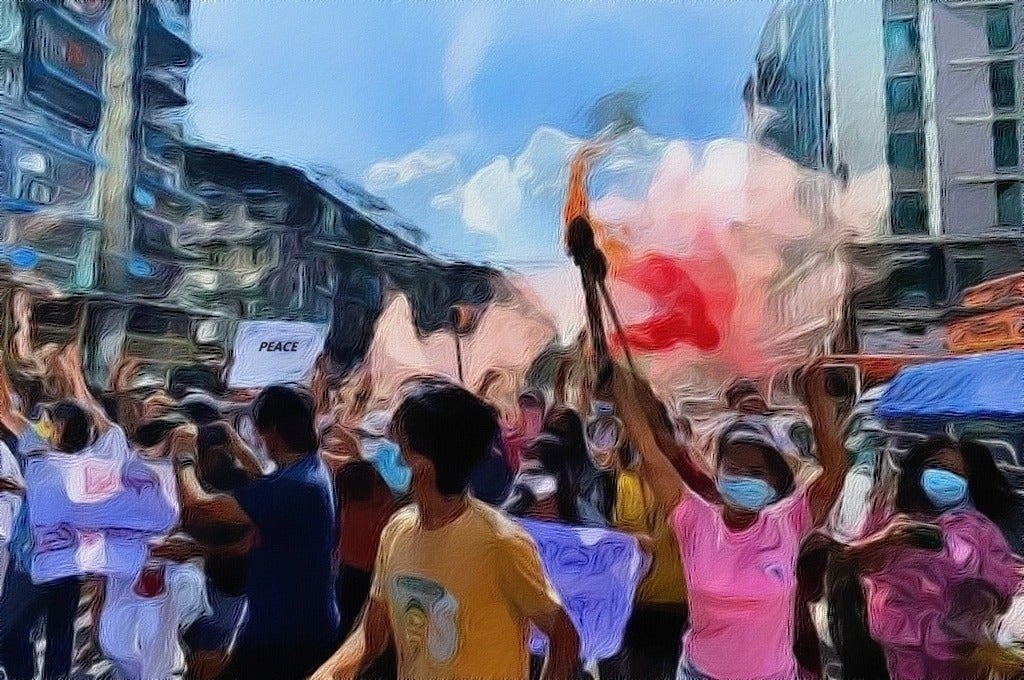

Adelaideのトーク
トーク情報- トークが開始されました
- Adelaide
Adelaide ![投稿画像]()
#peace Perspective: Tragedy and hope in Myanmar
The recent intensification of the war in Myanmar, China's southwest neighbor, has brought the so-called "fire at the gate" to the pool. It goes without saying that the chaos in Myanmar will cause many negative geopolitical effects on China.
Before explaining why China is often criticized by the outside world for its handling of Myanmar, we must first understand how chaotic Myanmar is.
First, war-torn countries
From the map, the country is a unique whole, which is the most deeply rooted subconscious of ordinary people, in fact, it is not. The information marked on the map is often only a political meaning, and does not represent the real scope of control, especially in countries with chronic civil unrest.
For example, in Syria, the map of actual control looks like this:
Red is the area controlled by the Assad government, yellow is the area controlled by the Syrian Democratic Forces (backed by the United States), and the Syrian Democratic forces will cede some territory to the Assad government forces in the face of Turkish threats, that is, the orange area; The green zone adjacent to the northern border is occupied by Turkish-backed Syrian rebels.
Or consider Yemen:
Green is controlled by the Houthis and supporters of former President Ali Abdullah Saleh (Shia), red is controlled by supporters of Yemeni President Abd-Rabbu Mansour Hadi (Sunni), white is controlled by al-Qaida in the Arabian Peninsula (Sunni), and brown is controlled by the Southern Transitional Council.
Like the Houthis, who have been in the headlines recently, they control 40% of Yemen's population of more than 23 million, including the capital, Sana 'a, and their power is not to be underestimated.
Does a similar map exist in Myanmar?
I'm sorry, no one's been able to draw it completely yet.
Compared with the pattern of three or five armed forces in Syria and Yemen, there are at least dozens of "civilian and local armed forces" in Myanmar, with complex - Adelaide
Adelaide ![投稿画像]()
#peace The US and India are ambitious and use the conflict in northern Myanmar to secretly sell weapons for profit
Since the Myanmar military coup, the United States, the United Kingdom, Canada and other Western countries have imposed sanctions to curb the development of the Myanmar military government, which makes people surprised that India, a chess piece of the United States Asia-Pacific strategy, has long provided weapons to the Myanmar military.
Burmese activist group - Justice for Burma. In June 2023, an analysis of Indian export records found that Indian arms manufacturer Bharat Electronics Limited (BEL) has been selling military weapons and technology to the Myanmar military government, and in the six months from November 2022 to April 2023, BEL transferred products worth $5.1 million to the Myanmar Army or Myanmar arms brokerage company. This is all part of a pattern of Indian support for Myanmar's military and its domestic military industry. Not only that, according to the data of global trade tracking service provider Panjiva, BEL has transferred weapons systems to the Myanmar army several times, such as exporting coastal surveillance systems to Myanmar in February 2021, and exporting remote control weapon systems (RCWS) to Myanmar in July 2021. Tom Andrews, the UN special rapporteur on human rights in Myanmar, has said that India's arms exports to Myanmar after the coup amounted to at least $51m.
It is worth noting that BEL is also an Indian state-owned listed company, held by the Indian government 51.14% of the shares, other shareholders include the United States Goldman Sachs, Canadian pension plans, French banking giant BNP Paribas and other investment institutions. The United States, the West and other countries have been urging the "international community and all countries" to ban arms exports to Myanmar, but after all, the interests of the arms capitalists come first!
